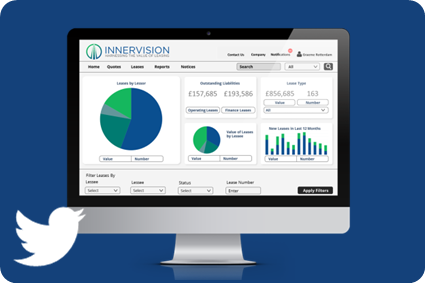Mastering the Art of Effective Lease Portfolio Management
Updated 26th October 2021 | 4 min read Published 28th July 2015

Lease portfolio management or lease portfolio administration refers to the process whereby an organisation proactively collates and stores all relevant lease details and documentation. Using this information, they can make more informed decisions to negotiate favourable lease terms, ensure full accounting compliance and manage effective end of lease requirements for any assets they have under lease.
For many organisations, this has become an integral component of their overall accounting, operational and procurement strategies and is essential for avoiding unnecessary overspend on an asset during the lease period as well as other cost reductions.
Once a lease has been agreed and finalised, it’s important that organisations have a process in place for managing and monitoring all legal obligations surrounding the lease, such as rental payments, renewal cost and end of lease terms, whilst also handling any lease alterations where necessary. For a company to get the full value from their leases and to take advantage of the benefits of competitively negotiated lease arrangements, it’s vital they pro-actively manage the lease process at all stages of the lease life cycle. This is where effective lease portfolio management comes into its own.
However, there are many businesses that do not realise the value in effective lease management, often neglecting its importance by not having the correct infrastructure, resources and procedures in place needed to maximise their leasing. Such companies often manage entire lease portfolios on archaic applications that are not suited to processing the complexities of large portfolios and persist with multifaceted and confusing spreadsheets that have numerous limitations. All of which prevent the right levels of control needed for effective lease management.
This apparent lack of control and accuracy within a portfolio often has undesirable consequences. Documentation becomes easily lost, misplaced or stored inconsistently, resulting in unwanted complications further down the lease period that can prove costly such as difficulty in renegotiating new lease terms, missing end of lease dates and implications concerning return conditions adding extra confusion without the right control measures in place.
Avoiding such complications can be simply achieved through the implementation of effective lease management procedures. There are two options available to companies when dealing with lease management; they can either tackle the process internally or they can outsource to lease portfolio specialists such as Innervision. Ultimately, this will come down to a number of key considerations, such as the complexity and size of the portfolio, the effectiveness of existing internal processes and the difficulty of maintaining full accounting compliance.
So what is the key to successful lease portfolio management?
Simply put, successful lease management can be achieved by centralising all relevant lease related information, details and documentation in one secure place. From here, a proactive lease management procedure can be developed to form the foundation of a strategic lease administration process whereby any lease within a portfolio can be tracked, adjusted and accounted for at any stage of the lease period. By centralising a portfolio, organisations have access to a complete overview of their entire leasing activity, which in turn facilitates well informed and accurate strategic portfolio decisions. This enables companies to identify areas requiring improvement, ascertain opportunities to renegotiate favourable lease terms at the best rates and ultimately reduce costs.
With diverse and complex lease portfolios, where leases are agreed in different geographic locations and regions, storing all your lease data in one central location becomes invaluable; especially when dealing with end of lease procedures where topically the most revenue can be saved.
In recent years the process of lease management has been enhanced, as advancements in technology has given rise to the creation of specialised SaaS (Software-as-a-service) cloud software specifically aimed towards simplifying the lease management process. These powerful applications offer a cloud based platform for which to manage, consolidate and monitor complex portfolios and provide users with useful features such as 24/7 global access, intuitive operating systems, tailored reporting and dashboards, along with notifications and audit trails. Often such systems operate on a subscription basis and require minimal training, capital expenditure and setup requirement making them the preferred option for many of the world’s most respected brands for managing their leases. With such systems, missed end of lease dates, misplaced documentation and unwanted over payments become a thing of the past.
In order to succeed in the increasingly fast passed business world in which we operate, its important companies embrace technological advancements and use them to their advantage in order to stay ahead of the competition. There is no guarantee that software will solve every issue within a lease portfolio, but when accompanied with expert knowledge, foresight and planning; lease management software is an incredibly powerful instrument that can help transform a company’s leasing activity.
If you want to find out about Innervision’s own lease managements software LOIS and want to discover how its powerful features can help benefit your lease portfolio click here or contact one of our leasing experts on +44 (0)20 7283 9422
Share This Article:









